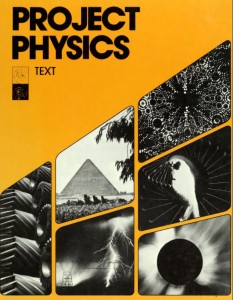Harvard Project Physics facts for kids
Project Physics was a special program created in the United States. It helped high school students learn about physics. This project started during a time called the Cold War, when countries were very focused on science and technology.
How Project Physics Started
This project ran from 1962 to 1972. During this time, it created a series of textbooks called Project Physics. Many schools used these books in their physics classes in the 1970s and 1980s.
The main work for the project happened at Harvard University. However, teachers and schools from all over the country helped out.
Three important people led this project:
- F. James Rutherford was the project coordinator.
- Gerald Holton was a physics professor at Harvard University.
- Fletcher G. Watson was a science education professor at Harvard.
What Students Learned
The Project Physics course had six main topics. Each topic had its own book, called a "Project Physics Text and Handbook" or "Student Guide."
The books taught physics in a way that included its history. They also shared interesting stories about the people who discovered these ideas. The goal was to help students truly understand physics concepts. It showed that physics is a deep search for understanding the universe.
Here are the six main topics:
- Concepts of Motion
- Motion in the Heavens
- The Triumph of Mechanics
- Light and Electromagnetism
- Models of the Atom
- The Nucleus
The course also included other helpful materials. There were special readers for students to explore topics more deeply. Lab exercises let students test their understanding with experiments. The project also made special lab equipment, short films, and guides for teachers. Today, all these materials are free online on the Project Physics Collection website.


